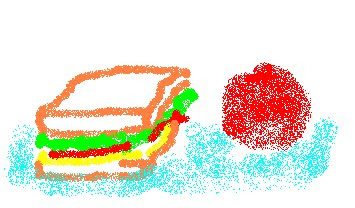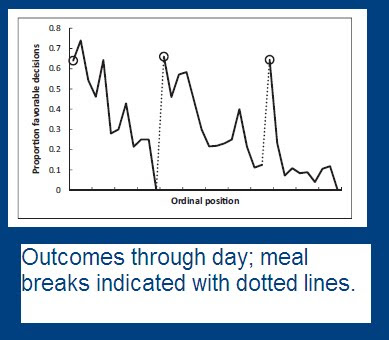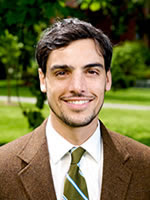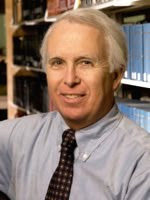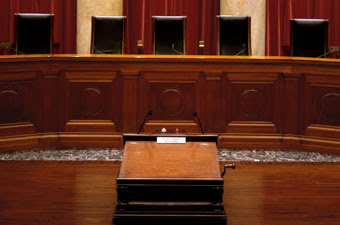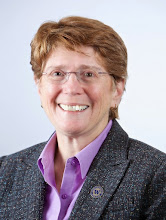Marilyn J. Berger, John B. Mitchell, and Ronald H. Clark, our neighbors at Seattle University's Trial Ad Program have been hard at work, creating multimedia teaching materials for their students – and for students and lawyers around the country who want to develop their skills.
 |
| cover of Trial Advocacy text |
Trial Advocacy: Planning, Analysis, and Strategy (3d ed. 2011) is the basic text that covers all aspects of the trial, from developing a case theory all the way through closing arguments. It comes with a DVD showing a simulated trial that is discussed throughout the book ("the Freck Point Trial") and a "scene of the crime" video that walks the viewer through a tavern where a crime that's the subject of another mock trial took place.
A companion book,
Trial Advocacy: Assignments and Case Files, has (you won't be surprised) assignments and case files.
(My post about the second edition (2009) is
here.)
The
publisher's page lists the 13 chapters. The catalog record is
here.
The publisher's website also has a
page of bonus features, such a booklet on voir dire by Karen Koehler (who also teaches in the UW's Trial Ad program), a sample juror questionnaire, and transcripts from the trial in which the City of Seattle tried to keep the Sonics in town.
 |
| cover of Evidence text |
Evidence: Skills, Strategies, and Assignments for Pretrial and Trial (2012) focuses on the nitty-gritty of handling evidence – objecting to it if you don't want it in, or introducing it and meeting objections if you do.
Evidence is designed for use in different contexts: as a supplement in a Trial Ad course, as a supplement for an Evidence class, as a text for a stand-alone class, or as a text for a lawyer who wants to improve his or her skills. (I could imagine it being used by college mock trial teams, too.)
Like
Trial Advocacy, it includes a DVD with the Freck Point trial. It also has a CD with case files to go with exercises. The publisher's page is
here. The catalog record is
here. So far, only one document is listed on the Bonus Materials page: a motion in limine in the Seattle Sonics case.
When I went to law school 30 years ago, I think it was typical for Evidence to be taught about the same way as other classes – in a large lecture hall, with a professor at the front and 100 students flipping through casebooks and statutory/rules supplements as they sat at long tables. I'm pretty sure we were never asked to rise and object to or defend proffered testimony. At the end of the semester, we scrawled exam answers in bluebooks, just as we did for all our classes.
This was good preparation for my first post-law-school job, clerking for an appellate judge. But actually handling evidence in a trial? No way.
I think that Evidence pedagogy has advanced considerably. For instance, the text by
Peter Nicolas (a UW professor),
Evidence: A Problem-Based and Comparative Approach, includes over 100 problems.
Publisher's page.
Catalog record. Still, though, the problems are meant for class discussion, not for trial simulations.
Berger, Mitchell, and Clark's book devotes all of Chapter 5 to exercises, and they aren't the sort that can be done from the back row of a lecture hall. There are roles for witnesses, prosecutors (or plaintiff's counsel), and defense counsel. (The instructor gets a CD with instructions for the actors who play witnesses.) Students are asked to address evidentiary issues either in motions in limine or as objections during trial.
Evidence goes into more detail about evidence than does
Trial Advocacy – but the difference isn't night and day. Chapter 4 in
Evidence, "Exhibits: Introducing and Displaying Them," tracks Chapter 7 in
Trial Advocacy, "Introducing Exhibits," very closely. In fact, I was surprised when I compared the two chapters that the
Trial Advocacy chapter went on longer, discussing evidence issues not in the
Evidence chapter. Further examination found that the content was just elsewhere in the book.
So that classes can use
Evidence without having to research rules and caselaw, the authors insert a text within a text.
Morgan's Evidence Handbook is an 83-page chapter (itself divided into chapters) summarizing the law of evidence in the fictional state of Major. (Major's evidence rules, like Washington's and many other states', are modelled on the Federal Rules of Evidence.)
I'm ambivalent about this. I like the idea of giving the students enough law so they can focus on the skills of submitting evidence, objecting, and so on. But as a librarian, I would like more classes to encourage students to look things up. Research is a skill they'll need too, even as trial lawyers. Of course, an instructor could choose to have the students do their exercises in a real jurisdiction or a hybrid of Major and a real jurisdiction. Students could be told to use
Morgan's Evidence Handbook and to deepen their knowledge of evidence with works from their own state, such as
The Law of Evidence in Washington by
Robert H. Aronson and the Washington Practice volumes
Evidence Law and Practice and
Courtroom Handbook on Washington Evidence and by
Karl B. Tegland.
Both books are very accessible. The font is a little larger than is typical in lawbooks. Checklists, pointers, and practice notes abound, indicated with consistent icons (e.g., a painter at an easel for
illustrations, a bewigged judge or barrister pointing at the text for
pointers).
Chapters are introduced with quotations drawn from a wide range of sources, from Shakespeare's
Julius Caesar to the recent classic,
My Cousin Vinny.
The books are practical, giving them impression that the authors are sharing wisdom they have accumulated through years of experience. There are some citations to the Federal Rules of Evidence and cases, but these books are guides, not treatises. You won't find footnotes, bibliographies, tables of authorities, or recommendations for further reading.
This is part of what makes the books accessible: they can be read easily, without wading through dense citations. I'm curious, though, so when I read "Studies show that we retain less than 15 percent of what we hear, but we remember over 80 percent of what we see and hear" (
Evidence at 118;
Trial Advocacy at 26), I wonder: what studies? where?
I think the publisher probably could have done a better job with the photographs: they should be sharper.
The Freck Point case is set up to be either a criminal case (murder) or a civil case (wrongful death). Within one class, students could be working on criminal or civil examples, using the same fact pattern, exhibits, and witnesses. The case is adapted from a story that was sensational enough to merit a true crime reporting by
Ann Rule (
see A Rose for Her Grave and Other True Cases) – a choice that must be intended to hold students' interest for a semester.
Thanks to Ron Clark's giving me review copies, these two books will soon be available in the library.
And for current commentary on trial advocacy issues, see Ron Clark's blogs,
Pretrial, Trial, Appellate & Evidence Blog and
Cross-Examination Blog.











